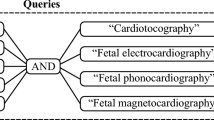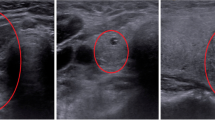Abstract
Thyroid classification is required in the medical domain to better assist doctors in deciding diagnostic treatments. Although many researchers conducted experiments to detect abnormal conditions of fetal brains in an earlier stage, there exist several limitations like over-fitting problems and imbalance data problems. To deal with these problems, this paper proposes ‘Transfer learning- Bidirectional Long Short Term Memory (TL-BiLSTM) which is an efficient thyroid classification model. This paper focuses on identifying the defects in fetal brains in a primary stage by investigating the thyroid range of the mother during the 19th week of pregnancy. In this research, TL is applied with Bi-LSTM for the improvement of Thyroid classification performance. The Transfer learning method selects the optimal batch size for the Bi-LSTM model to eliminate the overfitting problem. The bi-LSTM model learns the sequence in forward and reverses mode to store the useful features for the long term and discard the irrelevant features. The most significant features in the dataset are selected by applying a modified firefly algorithm (MFA). The modified firefly algorithm has the advantages of easy escape from local optima and a good convergence rate. For evaluation purposes, the thyroid dataset is used as input for investigating the proposed classifier’s effectiveness. The evaluation results display that the proposed novel approach successfully identifies and classifies thyroid problems using fetal brain magnetic resonance imaging (MRI) images of various Gestational weeks.









Similar content being viewed by others
Availability of data and material
Data sharing is not applicable to this article as no new data were created or analyzed in this study.
Code availability
Not applicable.
References
Ahmad W, Ahmad A, Lu C, Khoso BA, Huang L (2018) A novel hybrid decision support system for thyroid disease forecasting. Soft Comput 22(16):5377–5383
Akhtar T, Gilani SO, Mushtaq Z, Arif S, Jamil M, Ayaz Y, Butt SI, Waris A (2021) Effective voting ensemble of homogenous ensembling with multiple attribute-selection approaches for improved identification of thyroid disorder. Electronics 10(23):3026
Araya J, Rodriguez A, Lagos-SanMartin K, Mennickent D, Gutiérrez-Vega S, Ortega-Contreras B, Valderrama-Gutiérrez B, Gonzalez M, Farías-Jofré M, Guzmán-Gutiérrez E (2021) Maternal thyroid profile in first and second trimester of pregnancy is correlated with gestational diabetes mellitus through machine learning. Placenta 103:82–85
Attallah O, Sharkas MA, Gadelkarim H (2019) Fetal brain abnormality classification from MRI images of different gestational age. Brain Sci 9(9):231
Chandio JA, Mallah GA, Shaikh NA (2020) Decision support system for classification medullary thyroid cancer. IEEE Access 8:145216–145226
Chaubey G, Bisen D, Arjaria S, Yadav V (2020) Thyroid disease prediction using machine learning approaches. Natl Acad Sci Lett 44:1–6
Gupta N, Jain R, Gupta D, Khanna A, Khamparia A (2020) Modified ant lion optimization algorithm for improved diagnosis of thyroid disease. Cognitive informatics and soft computing. Springer, Singapore, pp 599–610
Hosseinzadeh M, Ahmed OH, Ghafour MY, Safara F, Ali S, Vo B, Chiang HS (2021) A multiple multilayer perceptron neural network with an adaptive learning algorithm for thyroid disease diagnosis in the internet of medical things. J Supercomput 77(4):3616–3637
Le T, Vo MT, Vo B, Hwang E, Rho S, Baik SW (2019) Improving electric energy consumption prediction using CNN and Bi-LSTM. Appl Sci 9(20):4237
Ma L, Ma C, Liu Y, Wang X (2019) Thyroid diagnosis from SPECT images using convolutional neural network with optimization. Comput Intell Neurosci 2019:1–11
Prasad V, Rao TS, Babu MSP (2016) Thyroid disease diagnosis via hybrid architecture composing rough data sets theory and machine learning algorithms. Soft Comput 20(3):1179–1189
Prochazka A, Gulati S, Holinka S, Smutek D (2019) Classification of thyroid nodules in ultrasound images using direction-independent features extracted by two-threshold binary decomposition. Technol Cancer Res Treat 18:1533033819830748
Sarangi SK, Panda R, Priyadarshini S, Sarangi A (2016) A new modified firefly algorithm for function optimization. In: 2016 international conference on electrical, electronics, and optimization techniques (ICEEOT). IEEE, pp 2944–2949
Shahid F, Zameer A, Muneeb M (2020) Predictions for COVID-19 with deep learning models of LSTM, GRU and Bi-LSTM. Chaos, Solitons Fractals 140:110212
Shankar K, Lakshmanaprabu SK, Gupta D, Maseleno A, De Albuquerque VHC (2020) Optimal feature-based multi-kernel SVM approach for thyroid disease classification. J Supercomput 76(2):1128–1143
Shen SL, AtanganaNjock PG, Zhou A, Lyu HM (2021) Dynamic prediction of jet grouted column diameter in soft soil using Bi-LSTM deep learning. Acta Geotech 16(1):303–315
Shen L, Zheng J, Lee EH, Shpanskaya K, McKenna ES, Atluri MG, Plasto D, Mitchell C, Lai LM, Guimaraes CV, Dahmoush H (2022) Attention-guided deep learning for gestational age prediction using fetal brain MRI. Sci Rep 12(1):1–10
Shrestha A, Li H, Le Kernec J, Fioranelli F (2020) Continuous human activity classification from FMCW radar with Bi-LSTM networks. IEEE Sens J 20(22):13607–13619
Sureshkumar V, Balasubramaniam S, Ravi V, Arunachalam A (2022) A hybrid optimization algorithm-based feature selection for thyroid disease classifier with rough type-2 fuzzy support vector machine. Expert Syst 39(1):e12811
Wang Y, Guan Q, Lao I, Wang L, Wu Y, Li D, Ji Q, Wang Y, Zhu Y, Lu H, Xiang J (2019) Using deep convolutional neural networks for multi-classification of thyroid tumor by histopathology: a large-scale pilot study. Ann Transl Med 7(18):468
Webb JM, Meixner DD, Adusei SA, Polley EC, Fatemi M, Alizad A (2020) Automatic deep learning semantic segmentation of ultrasound thyroid cineclips using recurrent fully convolutional networks. IEEE Access 9:5119–5127
Yadav DC, Pal S (2019) To generate an ensemble model for women thyroid prediction using data mining techniques. Asian Pac J Cancer Prev APJCP 20(4):1275
Yadav DC, Pal S (2020) Prediction of thyroid disease using decision tree ensemble method. Hum-Intell Syst Integr 2(1):89–95
Funding
Not applicable.
Author information
Authors and Affiliations
Contributions
All agreed on the content of the study. GJ and MSA collected all the data for analysis. GK agreed on the methodology. GJ and MSA completed the analysis based on agreed steps. Results and conclusions are discussed and written together. The author read and approved the final manuscript.
Corresponding author
Ethics declarations
Conflict of interest
The authors declare that they have no conflict of interest.
Human and animal rights
This article does not contain any studies with human or animal subjects performed by any of the authors.
Informed consent
Informed consent was obtained from all individual participants included in the study.
Consent to participate
Not applicable.
Consent for publication
Not applicable.
Additional information
Publisher's Note
pringer Nature remains neutral with regard to jurisdictional claims in published maps and institutional affiliations.
Rights and permissions
Springer Nature or its licensor (e.g. a society or other partner) holds exclusive rights to this article under a publishing agreement with the author(s) or other rightsholder(s); author self-archiving of the accepted manuscript version of this article is solely governed by the terms of such publishing agreement and applicable law.
About this article
Cite this article
Keerthi, G., Abirami, M.S. MFO-TL: modified firefly optimal transfer learning based motion correction of fetal brain and placenta MRI for thyroid prediction. Evolving Systems 15, 361–374 (2024). https://doi.org/10.1007/s12530-023-09556-3
Received:
Accepted:
Published:
Issue Date:
DOI: https://doi.org/10.1007/s12530-023-09556-3




